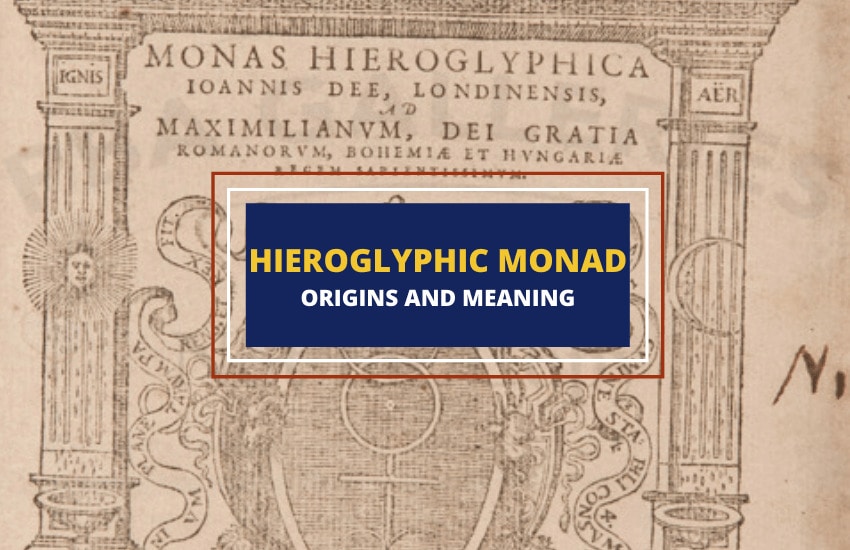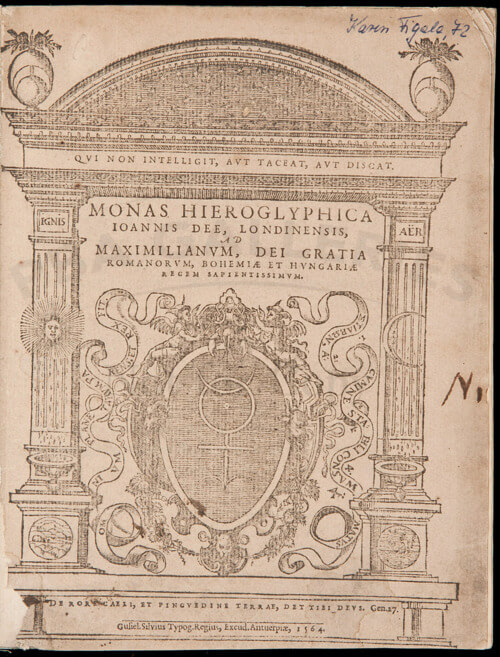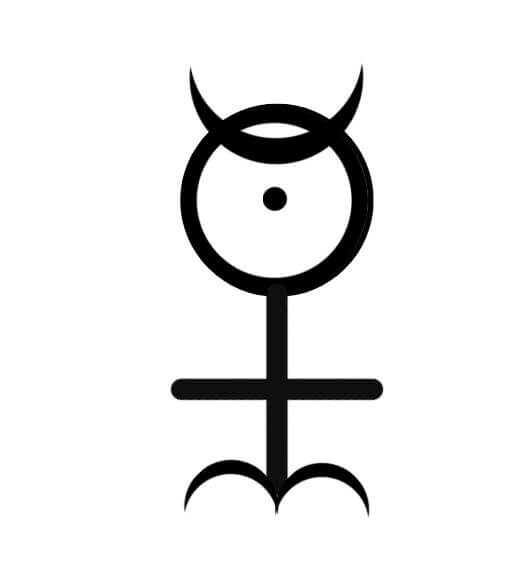
There are many religions, myths, and symbols regarding the unity of the Cosmos around the world. The Hieroglyphic Monad is arguably one of the most unique ones, especially given the area and time of its inception – the end of the Middle Ages in Europe. But what exactly is the Hieroglyphic Monad and why is it so fascinating?
The Hierohlyphic Monad

Also called the Monas Hierglyphica, this is an esoteric symbol created by John Dee in 1564 AD. Dee was a court astrologer and magus of England’s Queen Elizabeth I. He introduced the Hieroglyphic Monad in his book of the same name as an embodiment of his vision of the Cosmos.
The symbol itself is actually an amalgam of multiple different esoteric symbols and is exceptionally complex and impossible to fully describe with just words. Similar in its composition to several Taoist symbols, the Hieroglyphic Monad includes different elements and written text that all work in tandem.

Some of these components include two tall columns and an arch, a big crest surrounded by angels, and Dee’s glyph at the center. The glyph is another unique symbol that’s supposed to represent the unity of the sun, the moon, nature’s elements, and fire. All this is just a fraction of everything Dee managed to include in his Hieroglyphic Monad symbol and everything else is explained in detail in his book.
Astrological and Alchemical Influences
Dee’s work was both influenced and, in turn, influenced the fields of both astrology and alchemy. Today, we may view both of those fields as nonsensical pseudoscience but back in the 16th century, they were the predecessors of both astronomy and chemistry.
So, while Dee’s Hieroglyphic Monad doesn’t have any scientific value today, it affected both fields for several centuries before the new sciences took their place.
Christianity and John Dee
This brings us to the question:
How did the strongly Christian environment of Dee allow for this esoteric work to be published?
Let’s just say that there are perks to being the Queen’s court magus. Being a man also used to save a lot of astrologists, alchemists, and esoterics from being burned together with the supposed “witches” of the time.
Additionally, John Dee’s Hieroglyphic Monad may be esoteric but it’s not really paganistic or anti-Christian in any strict sense. There are several strictly Christian symbols within the Hieroglyphic Monad and Dee’s view of the Cosmic unity doesn’t go against the Biblical view.
On the contrary, Frances Yates later pointed out that Dee’s work played a strong influence over the Christian Puritans who later spread across the New World. This influence continued long after Dee had passed away thanks to other alchemists and astrologists such as his famous follower John Winthrop Jr. and others.
Wrapping Up
Today, the hieroglyphic monad of John Dee continues to inspire those interested in alchemy, astrology, and sacred geometry . The hieroglyphic monad remains a mysterious symbol, as its creator left many things unsaid, but it is still studied and enjoyed by many.
As a recent reviewer of the book states: “The book is divided into 24 theorems and provides us with illustrations and drawings to help the reader better understand the mystical properties of this symbol. A must-read for anyone interested in alchemy and sacred geometry”.








